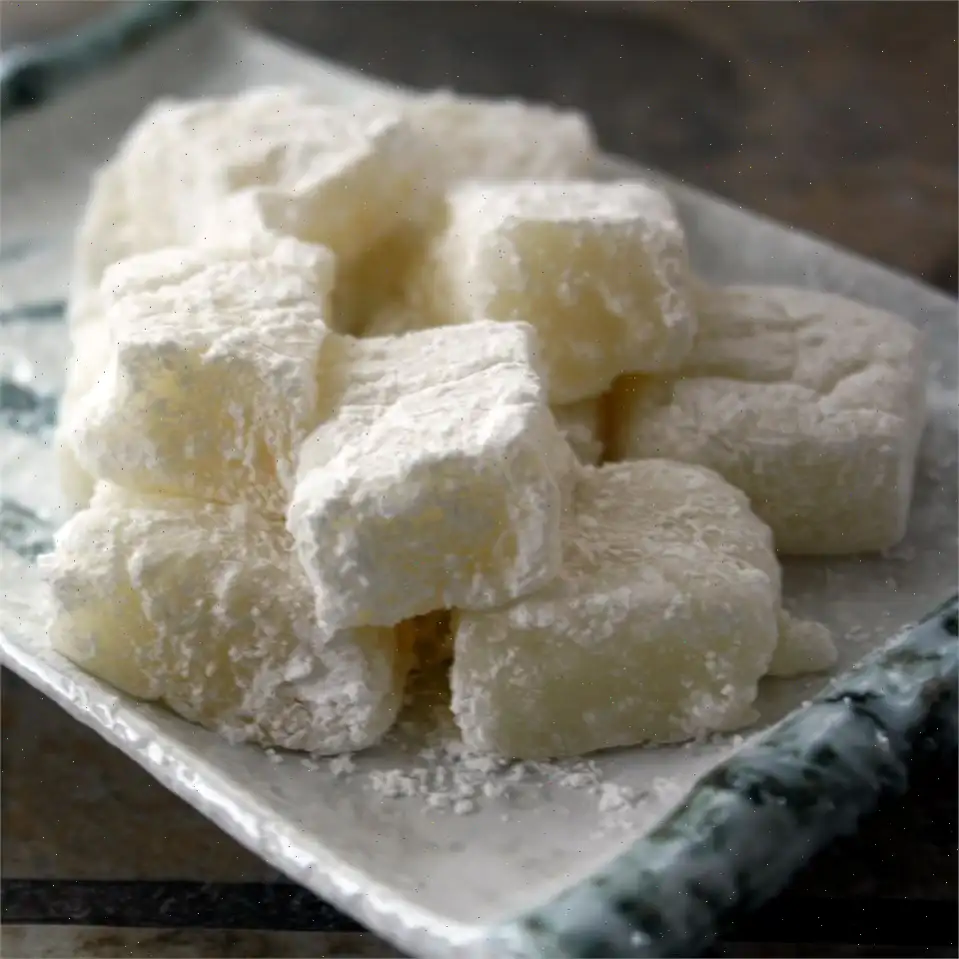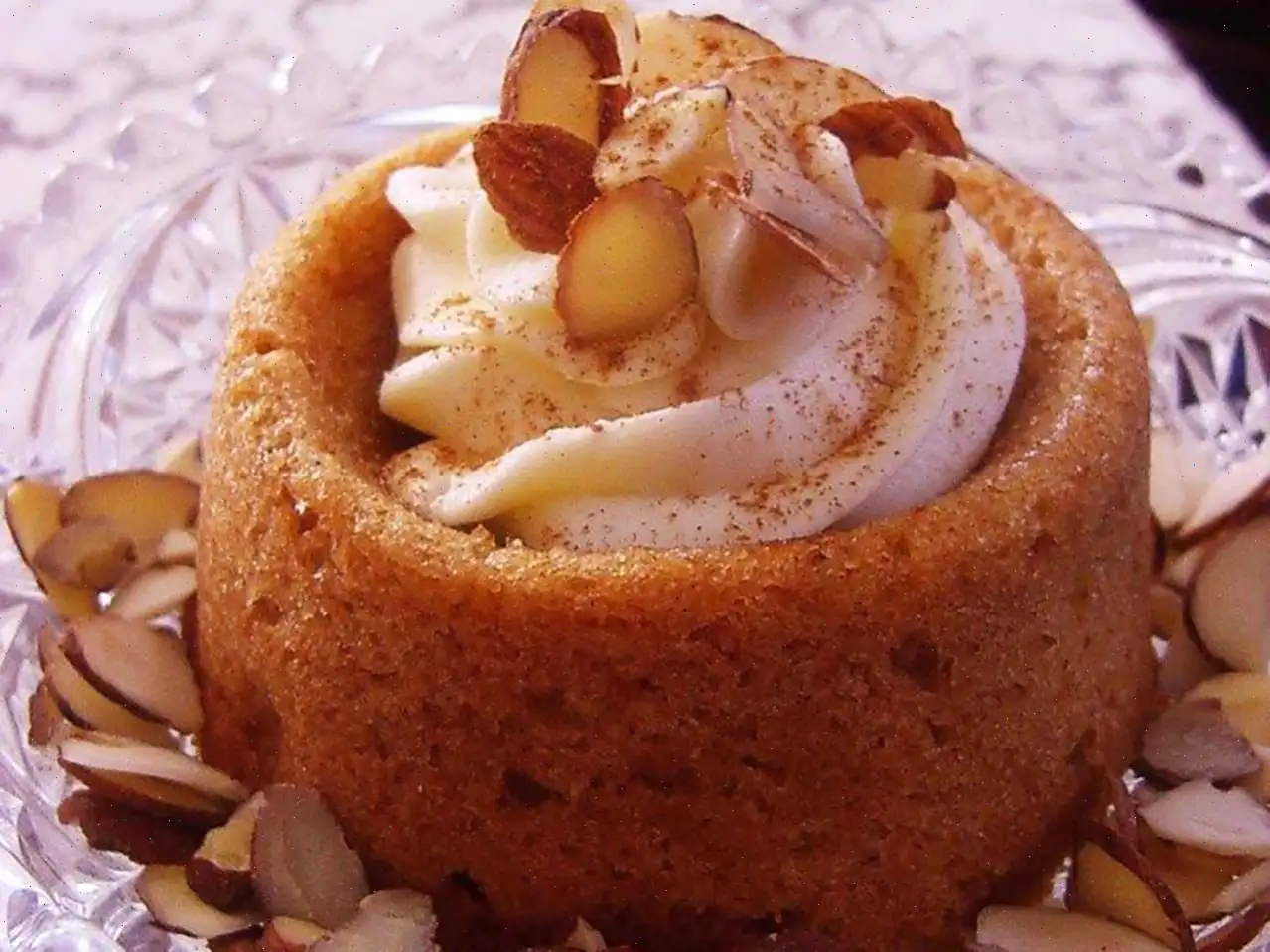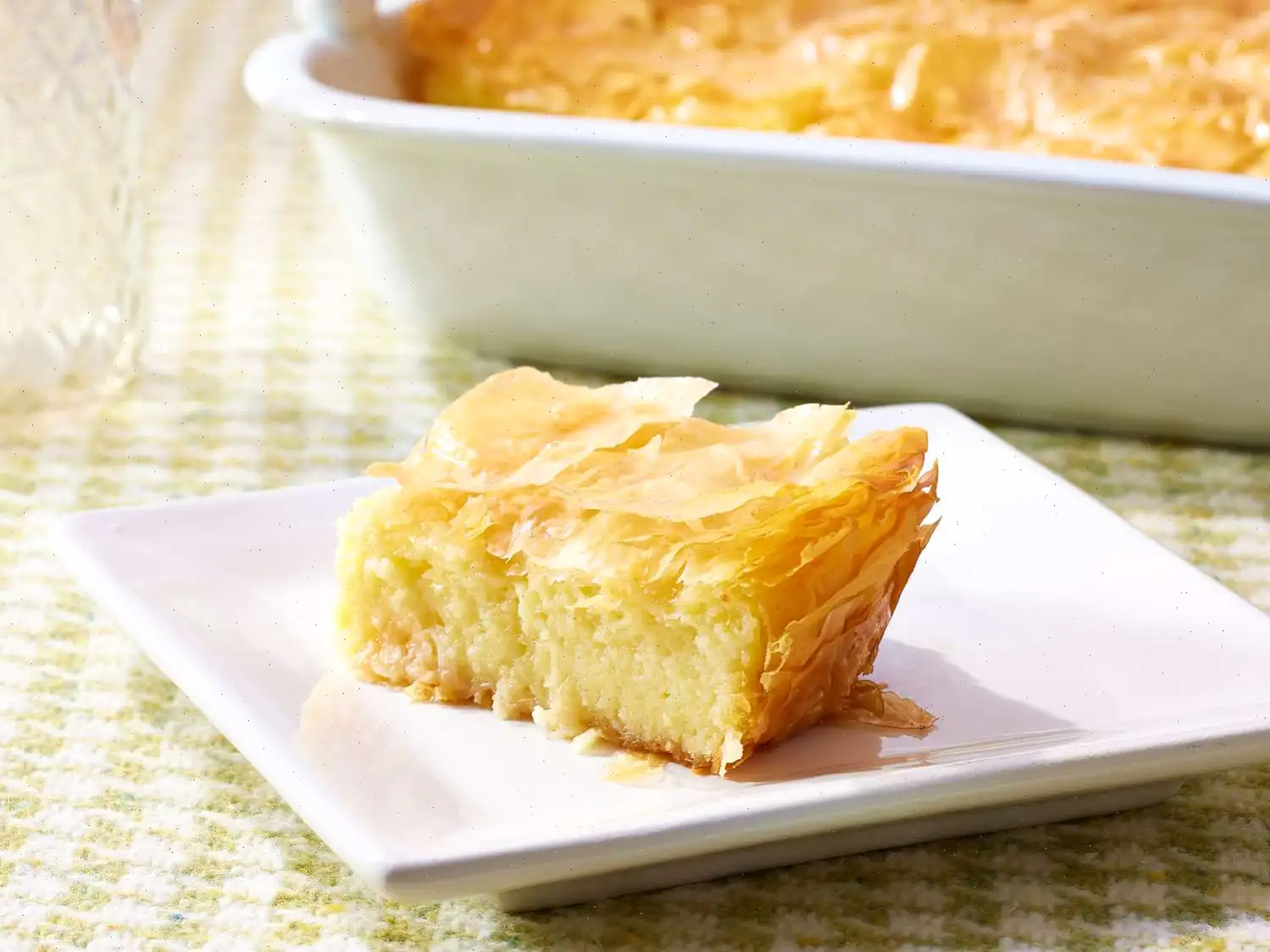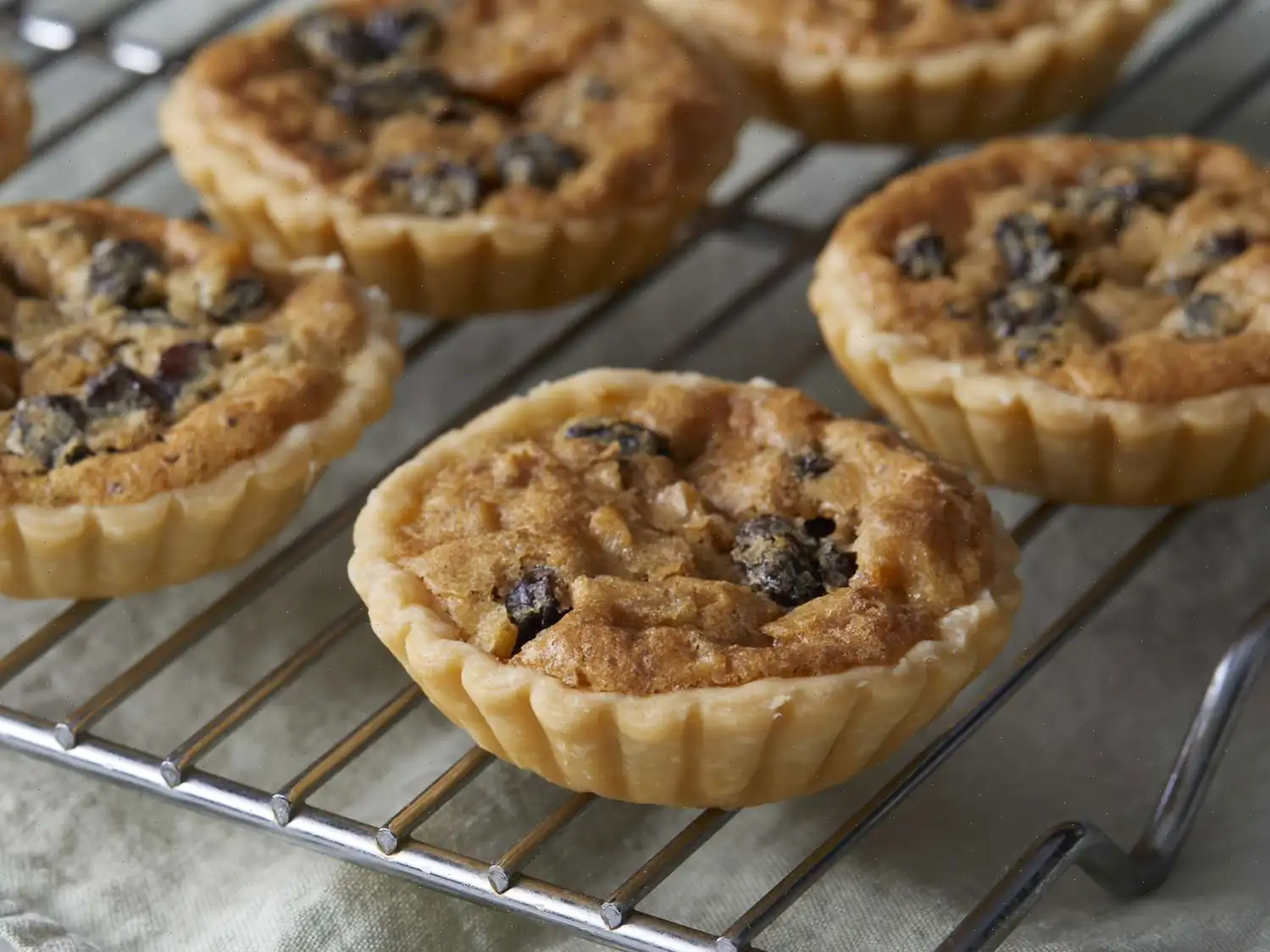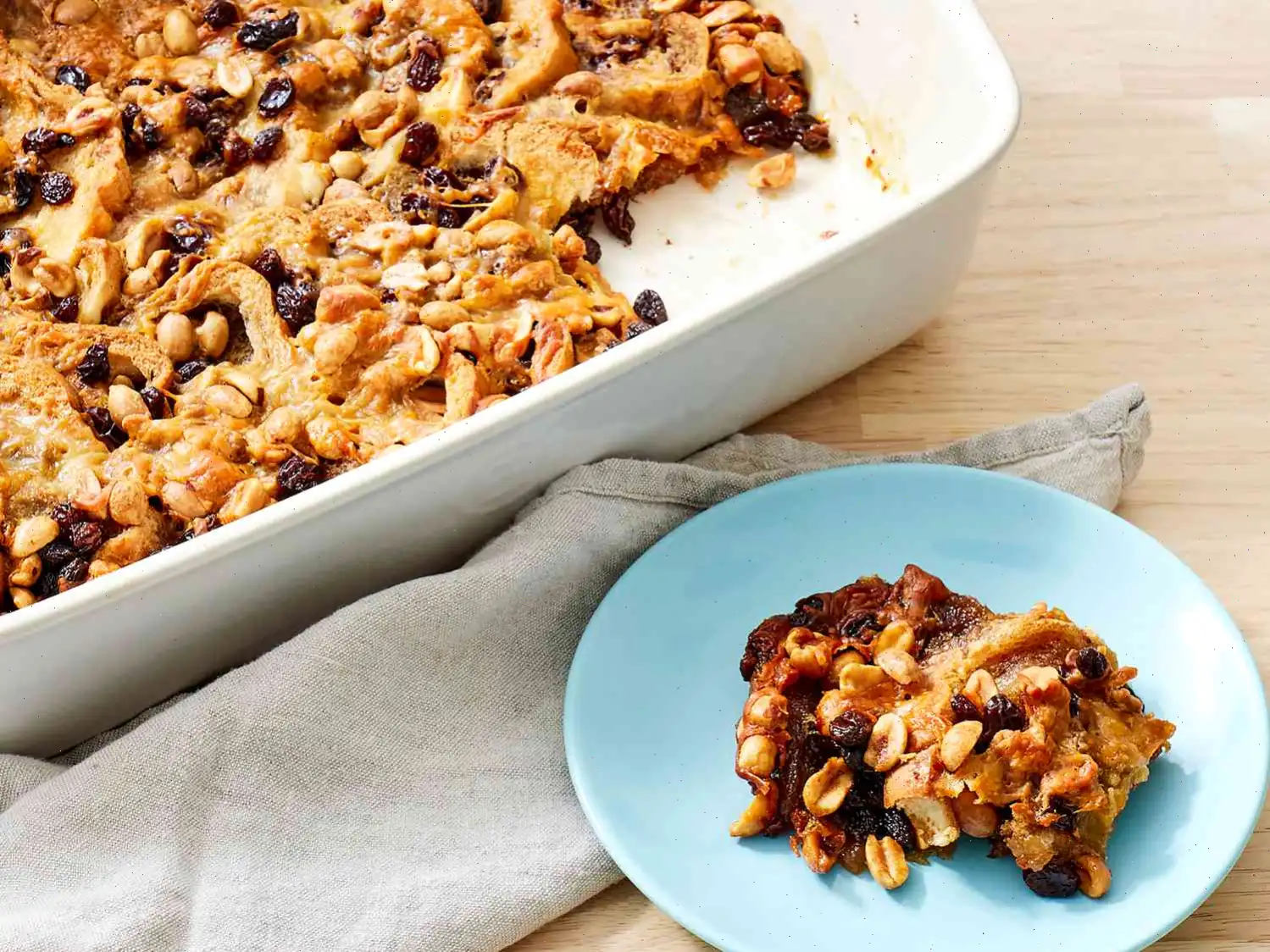
Microwave Mochi Recipe
Sweet Mochi Recipe
Yields: 25 servings
Ingredients:
- 1 cups mochiko (glutinous rice flour)
- 1 cups water
- 1 cups white sugar, divided
- 2 drops distilled white vinegar
- cup potato starch
- teaspoon salt
Directions:
- In a medium bowl, mix together mochiko, water, and 1 cup of sugar until well combined.
- Add 2 drops of vinegar to the mixture and stir to soften the texture.
- Transfer the mixture to a microwave-safe dish, and loosely cover with plastic wrap.
- Microwave the dish on high for 8 to 10 minutes, or until the mixture has set.
- Remove the dish from the microwave and let the mochi cool until it's cool enough to handle.
- In a small bowl, combine the remaining cup of sugar, potato starch, and salt.
- Once the mochi has cooled, turn it out onto a piece of plastic wrap. Using a plastic or wooden knife (avoid using metal as it tends to stick), cut the mochi into 25 equal pieces.
- Roll each piece of mochi in the potato starch mixture to coat.
Nutrition Facts (per serving):
- Calories: 83
- Fat: 0g
- Carbohydrates: 20g
- Protein: 1g
- Sodium: 24mg
- Fiber: 0g
- Total Sugars: 10g
- Calcium: 2mg
- Iron: 0mg
- Potassium: 8mg
* Percent Daily Values are based on a 2,000 calorie diet. Your daily values may be higher or lower depending on your calorie needs.
** Nutrient information is not available for all ingredients. Amount is based on available nutrient data.
History of Mochi
Mochi, a traditional Japanese sweet made from glutinous rice, has been a staple of Japanese culture for centuries. The origins of mochi date back to the Jomon period (around 10,000 BC), where it was used in religious ceremonies and as an offering to the gods. It is made by pounding steamed rice into a sticky, chewy mass, a process that has remained largely unchanged. Over time, different variations of mochi emerged, and it became a symbol of prosperity, health, and longevity. Today, it is enjoyed during New Years celebrations, traditional festivals, and as a popular street food in Japan.
Regional Differences in Mochi
While mochi is enjoyed throughout Japan, there are regional variations that distinguish its flavor and preparation. For example, in Kyoto, youll find "yatsuhashi," a mochi flavored with cinnamon, often served as a thin, crispy treat. In other regions like Okinawa, a version of mochi called "kibi mochi" is often flavored with brown sugar or coated in soybean flour. The texture and ingredients can also vary depending on the region, with some using coconut milk or green tea powder for added flavor. This microwave mochi recipe simplifies the process, making it accessible to anyone, anywhere, without needing special equipment like a pestle and mortar.
Differences from Similar Dishes
While mochi might resemble other rice-based desserts like Korean "tteok" or Chinese "niangao," it differs in its texture and preparation. Unlike tteok, which is often steamed or boiled, mochi is traditionally pounded into a sticky, elastic mass. This microwave mochi recipe eliminates the need for labor-intensive pounding, yet maintains the signature chewy texture of traditional mochi. Moreover, mochi is not typically sweetened as much as other rice cakes, allowing the natural flavor of the rice to shine through, especially when paired with fillings like red bean paste or fresh fruit.
Where Mochi is Served
In Japan, mochi is enjoyed year-round but is especially prominent during the New Year's holiday (Oshogatsu), where it is used in a dish called "ozoni" (a soup made with mochi). It is also a common offering during the annual "mochi-tsuki" festival, where families gather to pound rice into mochi. Mochi can also be found at street food stalls, often filled with sweet fillings like red bean paste (anko), or served as "mochi ice cream" a modern fusion of traditional mochi and Western ice cream. Outside Japan, mochi is gaining popularity in Asian markets and beyond, often appearing in stores as frozen desserts, snacks, or in the form of innovative treats like mochi donuts.
Interesting Facts About Mochi
1. In Japan, the art of making mochi is considered a serious tradition. Mochi-making events, such as "mochi-tsuki," are social gatherings that allow participants to bond over the process of pounding the rice, an activity that symbolizes community and togetherness.
2. New Year's mochi is associated with longevity. Eating mochi during New Years is believed to bring good health and longevity, which is why it is often included in the first meal of the year.
3. Mochi can be dangerous if not chewed properly. Due to its sticky, dense texture, mochi is infamous for causing choking hazards, particularly for elderly people. This has led to warnings in Japan about taking small bites and chewing thoroughly, especially during festive occasions.
4. Modern variations of mochi are incredibly versatile. While traditional mochi is simple, contemporary versions include fillings ranging from fruit and ice cream to savory ingredients like cheese or even spicy kimchi.
Conclusion
Whether you are a fan of traditional Japanese sweets or simply looking for a fun and easy recipe to try, microwave mochi is a delightful and accessible way to enjoy this iconic treat. With just a few ingredients and a microwave, you can recreate the soft, chewy texture that makes mochi so unique. Try experimenting with different fillings or flavorings to make it your own!
FAQ about Microwave Mochi Recipe
Comments
Kathleen Allen
11/20/2022 01:58:06 PM
I discovered that using boiling water with rice flour and sugar produced better results when making this recipe a second time. I added an extra 2 teaspoons of water to ensure the flour and sugar fully dissolved. Omitting the vinegar, as others had suggested, proved to be a good decision. To prevent it from becoming dry, I microwaved the mixture for only 6 minutes. After allowing the mochi to cool, I prepared a mixture of 1 cup of coconut, 1/8 cup (or less) of sugar, and a pinch of salt, which I found to be sweet enough. I flattened the mochi like a pancake, added a moderate amount of crunchy peanut butter, folded it in half, and rolled it into a ball. Not using starch was also a preference, as I found it made the dish too dry when I made it the first time.
Karen Torres
12/24/2024 12:40:23 AM
I've made this recipe twice now. The first time, I followed the original instructions and filled the squares with red bean paste or ice cream, and it was decent. Today, I decided to switch it up by using coconut milk and incorporating two tablespoons of cocoa powder and a teaspoon of vanilla. After cooking it for 8 minutes, I rolled the mochi in a mixture of coconut and confectioners sugar, then filled the squares with either red bean paste or dried apricot. The chocolate flavor was subtle, the texture was soft, and the fillings were delightful. Using parchment paper in the cooking dish and on the board helped prevent stickiness. Overall, I enjoy this recipe and would suggest adding more flavor enhancements. The coconut milk truly elevates the dish. Since then, I've made this recipe two more times, but this time I replaced half of the sugar with a package of strawberry-flavored Jello. This addition not only gave the mochi a vibrant color but also a distinct taste. I cut the mochi into squares and coated them with confectioner's sugar. However, I noticed that with the Jello addition, the cooking time might need to be extended as the middle part of my mochi was too gooey. Nevertheless, the taste was excellent.
Patrick Flores
08/16/2022 03:53:00 AM
Great base recipe to start with for making coconut mochi! I made some adjustments to replicate the bakery-fresh coconut mochi I adore. The texture turned out super similar. I ended up with about 12 medium-large filled mochi balls using this recipe. Using only 1/3 cup of sugar worked well for me, and I swapped 1/2 cup of water for canned coconut cream. Additionally, I mixed in 2 tbsp of dried coconut milk powder with the rice flour. I rolled the balls in finely shredded coconut for added flavor. This recipe saved me a 50-mile trip to the bakery for my favorite mochi, so I consider it a success! I agree on reducing the sugar amount - mochi isn't traditionally overly sweet. Cooking in 2-minute intervals and microwaving the mochi for a total of 6 minutes (I have a 900-watt microwave) worked perfectly for me.
Jennifer Taylor
03/08/2024 07:07:41 AM
Wow! This recipe is amazing - fast, easy, and delicious! I crumbled up some peanut butter cookies to use as filling, and it turned out incredibly tasty. The crunchy, nutty texture adds a great element. I will definitely be making this recipe again!
Jacob Lopez
02/05/2024 03:38:04 PM
The recipe is absolutely perfect! It filled my heart with joy and brought back memories of Japan that I dearly miss. It reminded me of my favorite mochi street food place with its delicious flavors. This is definitely the best recipe I've tried so far. Thank you for sharing it!


